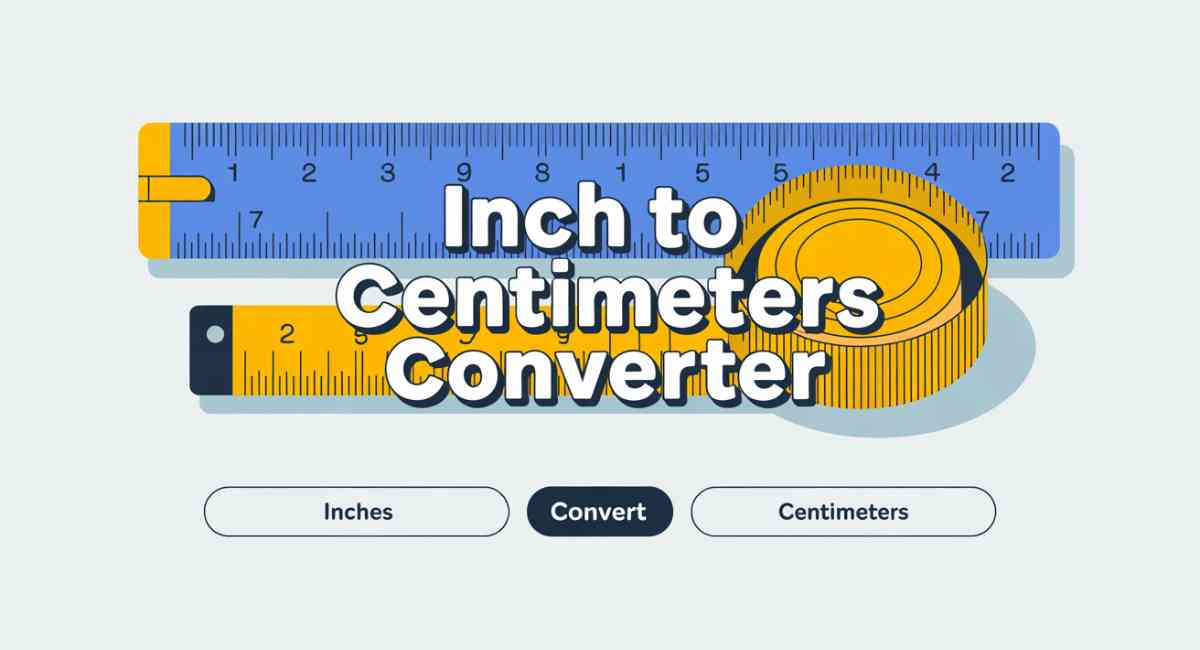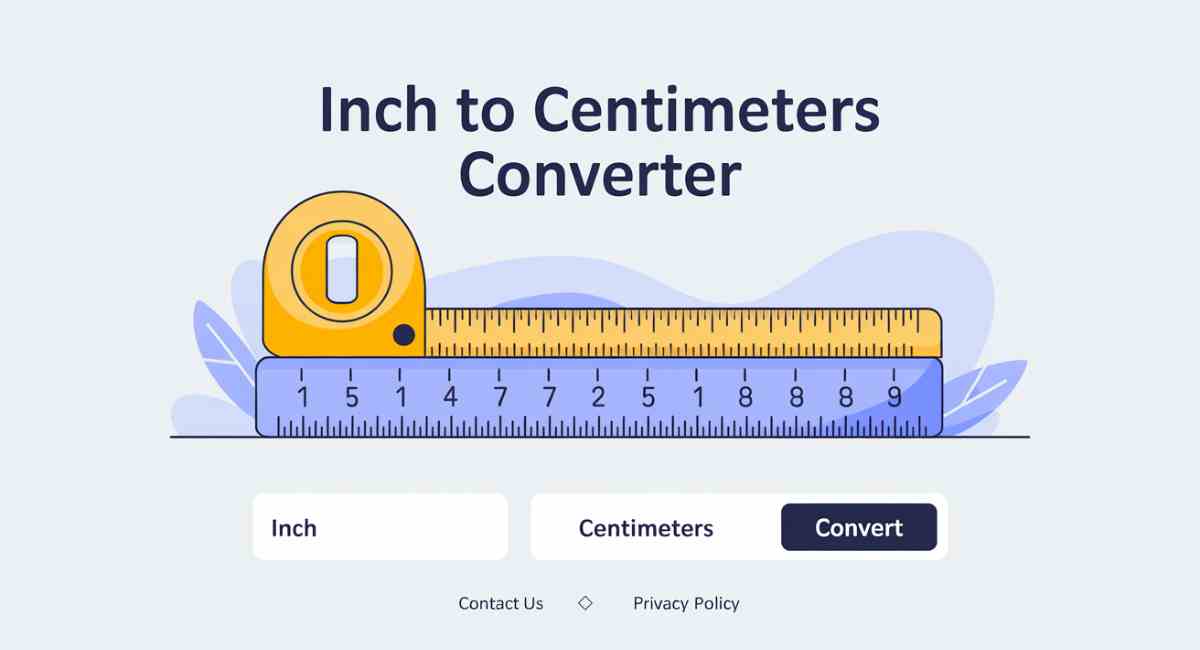Inches to Centimeters Converter – Best Guide 2025
Convert any inch measurement to centimeters instantly with our free, real-time conversion tool. Accurate, fast, and easy to use!
Understanding Inches and Centimeters – A Complete Guide

Welcome to our comprehensive guide on converting inches to centimeters! Whether you’re working on a DIY project, shopping for furniture, or completing a school assignment, understanding how to convert between these two units of measurement is an essential skill in our globalized world. This article will explore everything you need to know about inches, centimeters, and their conversion.
Key Fact: The inch is primarily used in the United States, while most of the world uses the metric system with centimeters. Understanding how to convert between these systems is crucial for international communication, trade, and everyday measurements.
Why Convert Inches to Centimeters?
In a world where measurements matter, the ability to convert between inches and centimeters opens doors to international understanding. The inch is predominantly used in the United States and a few other countries, while the metric system (which includes centimeters) is the standard in most of the world. This difference creates a frequent need for conversion in many areas:
Engineering & Manufacturing
Global product specifications often require converting between imperial and metric measurements for precision parts.
Fashion & Tailoring
International clothing sizes and patterns frequently use different measurement systems.
Home Improvement
DIY projects often involve materials and tools with measurements from different systems.
The Simple Conversion Formula
The relationship between inches and centimeters is straightforward and based on an internationally agreed-upon standard. The conversion factor was established in 1959 when the inch was officially defined as exactly 2.54 centimeters.
The conversion formula is:
Centimeters = Inches × 2.54
This means that to convert any inch measurement to centimeters, you simply multiply the number of inches by 2.54. For example:
- 1 inch = 1 × 2.54 = 2.54 cm
- 5 inches = 5 × 2.54 = 12.7 cm
- 10 inches = 10 × 2.54 = 25.4 cm
This exact conversion factor ensures precision in scientific, engineering, and commercial applications worldwide. The National Institute of Standards and Technology maintains these standards to ensure consistency across industries.
Common Conversions: Inches to Centimeters
Here’s a quick reference table for common inch to centimeter conversions. Bookmark this page for easy access to these frequently needed conversions:
| Inches | Centimeters | Common Applications |
|---|---|---|
| 1/4″ | 0.635 cm | Small hardware, drill bits |
| 1/2″ | 1.27 cm | Common pipe diameter |
| 1″ | 2.54 cm | Standard photo size |
| 5″ | 12.7 cm | Mobile phone screens |
| 8.5″ × 11″ | 21.6 × 27.9 cm | Standard letter paper |
| 12″ | 30.48 cm | Rulers, vinyl records |
| 24″ | 60.96 cm | Monitor sizes, luggage |
| 36″ | 91.44 cm | Yardsticks, belt lengths |
History of Inches and Centimeters
The Origin of the Inch
The inch has a fascinating history dating back to ancient times. Originally based on the width of a man’s thumb, the inch was standardized in England during the reign of King Edward II in the 14th century. He declared that “three grains of barley, dry and round, placed end to end lengthwise” would equal one inch.
Over centuries, various definitions of the inch emerged in different regions. It wasn’t until 1959 that the international inch was defined as exactly 2.54 centimeters, creating a consistent standard across English-speaking countries.
The Birth of the Centimeter
The centimeter is part of the metric system, which was developed during the French Revolution in the late 18th century. The French Academy of Sciences created a system based on natural constants rather than human body parts. They defined the meter as one ten-millionth of the distance from the equator to the North Pole.
The centimeter, being one-hundredth of a meter, became a practical unit for everyday measurements. Today, the meter (and thus the centimeter) is defined by the distance light travels in a vacuum in 1/299,792,458 seconds, as established by the International Bureau of Weights and Measures.
Practical Applications in Daily Life
In Engineering and Manufacturing
Precision is paramount in engineering, and conversion between inches and centimeters is routine. Global supply chains mean that components might be designed in one country using metric measurements and manufactured in another using imperial measurements. Understanding that 1 inch equals exactly 2.54 cm ensures that parts fit together perfectly regardless of where they were produced.
In Fashion and Tailoring
The fashion industry operates globally, with designs often created in Europe (using centimeters) and manufactured in the United States (using inches). Seamstresses and tailors must be fluent in both systems. For example, knowing that a 32-inch waist is approximately 81 cm helps when working with international patterns.
In Science and Education
While the scientific community universally uses the metric system, educational materials in some countries still present examples in inches. Students must learn to convert between systems to understand scientific principles and data from international sources. Resources like the NASA website often provide measurements in both systems.
Tips for Accurate Conversion
To ensure precision in your conversions:
- Always use the exact factor of 2.54 rather than approximations
- For fractional inches, convert to decimal first (1/4″ = 0.25″)
- When measuring physical objects, use precise tools and measure twice
- For critical applications, double-check with a professional conversion tool
Remember that while 2.5 cm is often used as an approximation for 1 inch, this 1.6% difference can be significant in precision work. Always use the exact conversion factor when accuracy matters.
Pro Tip: For quick mental conversions, you can use the approximation that 1 inch equals 2.5 cm. This gives you a value that’s about 1.6% smaller than the actual conversion, which may be acceptable for everyday estimations but should not be used for precision work.
Beyond Conversion: Understanding Measurement Systems

While converting between inches and centimeters is useful, understanding the fundamental differences between the imperial and metric systems provides deeper insight. The metric system is decimal-based, making conversions between units (millimeters to centimeters to meters) straightforward by moving the decimal point. In contrast, the imperial system uses various conversion factors (12 inches in a foot, 3 feet in a yard, etc.).
This difference explains why the metric system is preferred in scientific contexts and why most countries have adopted it for everyday use. However, understanding both systems remains valuable, especially in international contexts.
Ready to Convert Any Measurement?
Use our real-time inch to centimeters converter at the top of this page for instant, accurate conversions anytime you need them. Bookmark this page for quick access to our conversion tool and reference tables!
Back to ConverterFrequently Asked Questions
How many centimeters are in an inch?
There are exactly 2.54 centimeters in one inch. This conversion factor is internationally standardized and used in all official conversions.
Why is the conversion factor 2.54?
The value 2.54 was established in 1959 when the inch was redefined based on the metric system to create consistency between measurement systems. Before this standardization, different countries had slightly different definitions of the inch.
How do I convert centimeters back to inches?
To convert centimeters to inches, divide the centimeter value by 2.54. For example: 10 cm ÷ 2.54 = 3.937 inches.
Is the inch still used today?
Yes, the inch is still the primary unit of measurement in the United States for many applications, including construction, screen sizes, and some manufacturing. It’s also used alongside metric units in the United Kingdom and Canada.
What’s the best way to measure inches accurately?
For precise measurements, use a quality ruler or tape measure with clear markings. For digital accuracy, consider using calipers or laser measurement tools that can switch between measurement systems.
Conclusion
Converting inches to centimeters is a fundamental skill in our interconnected world. With the exact conversion factor of 1 inch = 2.54 centimeters, you can confidently translate measurements between these two systems. Whether you’re working on an international project, shopping online from overseas retailers, or simply trying to understand product specifications from different countries, this conversion knowledge is invaluable.
Remember to use our real-time converter tool at the top of this page for quick and accurate conversions. Bookmark this page for future reference, and share it with others who might benefit from this information!
